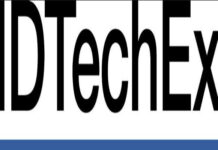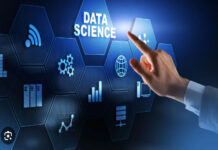The security industry has, no doubt, continued to shift, adapt, and develop despite various happing around the world. Several trends have even accelerated it. Beyond traditional “physical security,” a host of frontiers like AI, cloud computing, IoT, and cybersecurity are being rapidly pioneered by entities, big and small, in our industry.
By all appearances, the security industry is in a stage of redefining itself. It is moving from mere security and safety protections to encompass a wider scope of activity that will expand safety while also bringing new levels of intelligence and sustainability to communities, companies and societies.
Here, Hikvision would like to share some of our ideas and expectations about the key trends that will likely shape the security industry in the future.
AI will be everywhere
Nowadays, Artificial Intelligence is quite common in the security industry. More customers in the industry have recognized the value of AI, and have found new uses for AI applications in various scenarios. Along with ANPR, automated event alerts, and false alarm reduction, AI technologies are being used for wider applications, like personal protective equipment (PPE) detection, fall detection for the elderly, mine surface detection, and much more.
AI has been one of the fundamental technologies to reshape the security industry. Benefiting from the optimization of algorithms, as well as the improved computing performance and the decreased cost of chips due to the advancement of semiconductor technology in recent years, AI applications are gradually forming the basic functions and capabilities accepted by all sectors in the industry, and we predict an even stronger tendency to assert that “AI will be everywhere.”
AIoT will digitize and pervade industry verticals
With more security cameras and other security devices being connected to the network, the security industry is becoming an important part of the IoT world, enriching its visual capabilities. Meanwhile, the popularization of AI technology enables connected devices to become intelligent “things” in the IoT world. The combination of AI and IoT, or as we call it, AIoT, is taking the security industry to a higher plain, automating the workflows and procedures of enterprises and aiding in the digital transformation of various industry verticals such as energy, logistics, manufacturing, retail, education, healthcare, etc.
From our perspective, AIoT brings more possibilities to the industry with rapidly expanding applications for security devices and systems. Meanwhile, more perception capabilities like radar, Lidar, temperature measuring, humidity sensing, and gas leak detection are being added to security devices and systems to make them more powerful. These new devices shoulder a multiplicity of tasks that just a few years ago required several different devices, covering both security functions and other intelligent functions for an ever-advancing world.
Converged systems will break down data silos
Workers throughout private enterprises and public service sectors alike would jump at the chance to get rid of obstructive “data silos.” Data and information scattered and isolated in disparate systems or groups create barriers to information sharing and collaboration, preventing managers from getting a holistic view of their operations. Here, the convergence of various information systems has been proven to be an effective approach – hopefully enough to break down those silos.
Cloud-based solutions and services will be essential
Like AI, the cloud is not a new trend in our industry, but it is an expanding one. From small business markets to enterprise levels, we can see the momentum push more and more businesses to leverage cloud-based security solutions and services. And as we are witnessing even now, the pandemic has accelerated the movement to cloud-based operations for people and businesses around the world.
Crystal clear security imaging will be standard in any weather, under any conditions, any time of day or night
It is always vital for video security cameras, as a core function to maintain image clarity and capture details 24 hours a day, in any weather and under any condition. Cameras with low-light imaging technology that renders high-definition and full-color images at night and in nearly completely dark environments have been very welcome in the market. We are taking note of the impressive technology applied to more camera models, including 4K, Varifocal and PTZ cameras. Moreover, for clearer video security imaging in poor visibility – especially in severe weather – high-performance imaging sensors, ISP technology, and AI algorithms are being employed, enabling cameras to maintain clarity and details of the view.
Biometric access control will bring higher security and efficiency
In the past decades, authorized access control has moved a long way away from keys, pin codes and ID cards. We now find ourselves stepping into the era of biometrics. The access control market is rapidly becoming occupied by biometric authentications, from fingerprint and palm print recognition to facial and iris recognition.
Biometric access controls bring inherent advantages, like higher security and efficiency with reduced counterfeiting. They verify within seconds – or fractions of seconds – and prevent unnecessary physical contact. Iris, palm print, and facial recognition offer touchless access control, a hygienic practice more and more favored as a result of the pandemic.
The Zero Trust approach will take the cybersecurity spotlight
With more security devices connecting over the Internet than anyone ever imagined, cybersecurity has become an immense challenge in the industry. A strategic initiative that was developed to prevent data breaches by eliminating the concept of trust from an organization’s network architecture, Zero Trust is rooted in a philosophy of “never trust, always verify.” The concept has been roundly accepted within the IT industry and it is now also slowly but steadily moving into the physical security realm, as it gradually becomes an important part of the IoT world.
Green manufacturing and low-carbon initiatives will take big strides
The consensus is in: low-carbon initiatives are valued by societies around the world. In the security market, we have seen products featuring low power consumption become the preferred options for customers, and demands for solar-powered cameras are increasing.
About the author:

Ashish P. Dhakan is MD & CEO at Prama Hikvision India Pvt. Ltd.















